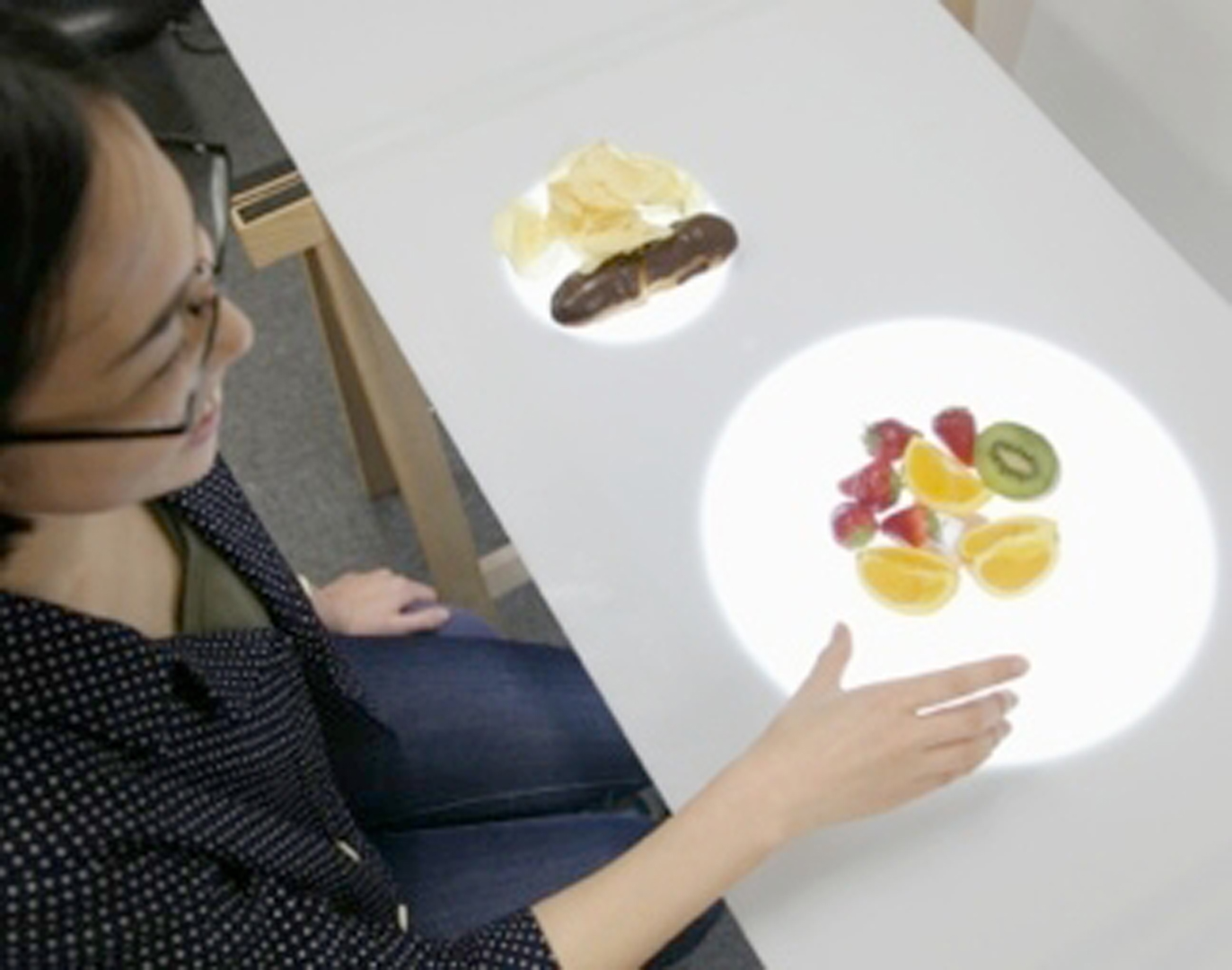“CalibraTable: Tabletop System for Influencing Eating Behavior”
Conference:
Experience Type(s):
Title:
- CalibraTable: Tabletop System for Influencing Eating Behavior
Organizer(s)/Presenter(s):
Description:
The apparent volume of food in front of a diner influences his/her eating behavior. Previous studies have shown that the ratio of the size of the dish to the size of the food it contains has an effect on the estimated food volume and the amount of food consumed With this finding as our underlying basis, we constructed a tabletop system that projects virtual dishes around the food in order to change the assessed apparent food volume interactively. We hypothesized that the amount of food consumed can be influenced by the size of the dish according to the ratio of the size of the food to that of the virtual dish, and conducted an experiment to investigate the effect of the system. Our results indicate that the size of the virtual dish affects food volume estimation and the amount of food consumed at a single sitting even for equal amounts of food unconsciously, without loss of palatability and satisfaction. This enables us to use the system with any kind of food, and eliminates the need to use wearable devices. We also proposed some interaction scenario for controlling nutrient balance by changing the size of the virtual dishes.
References:
[1]
Suzuki, E., Narumi, T., Sakurai, S., Tanikawa, T. and Hirose, M.: Illusion Cup: Interactive Controlling of Beverage Consumption Based on an Illusion of Volume Perception, Augmented Human 2014, Article.41:8, Mar. 2014.
[2]
Ittursum, K. V., and Wansink, B. 2012. Plate Size and Color Suggestibity: The Delboeuf Illusion’s Bias on Serving and Eating Behaviors. Journal of Consumer Research, 39(2), 215–228.
[3]
Maitland, J., and Chalmers, M. 2011. Designing for peer involvement in weight management. In Proc. of CHI 2011, 315–324.
[4]
Narumi, T, Ban, Y., Kajinami, T., Tanikawa, T., and Hirose, M. 2011. Augmented Perception of Satiety: Controlling Food Consumption by Changing Apparent Size of Food with Augmented Reality. In Proceedings of CHI2012, 109–118
[5]
Nicolas, S. 1995. Joseph Delboeuf on Visual Illusions: A Historical Sketch. American Journal of Psychology, 104 (Winter), 563–574.
[6]
Rolls, B. J., Liane, S. R., Kitti, H. H., and Jennifer, S. M. 2007. Using a Smaller Plate Did Not Reduce Energy Intake at Meals. Appetite, 49(3), 652–660.
[7]
Sakurai, S, Narumi, T., Ban, Y., Tanikawa, T., and Hirose, M. 2013. Affecting Our Perception of Satiety by Changing The Size of Virtual Dishes Displayed with A Tabletop Display. HCII2013, In Proceedings of, Proc. Part II. LNCS Vol. 8022, 90–99.
[8]
Wansink, B., and Cheney, M. M. 2005. Super Bowls: serving bowl size and food consumption. The Journal of the American Medical Association, 13; 293(14), 1727–1728.
[9]
Wansink, B., and Ittursum, K. V., and Painter, J. E. 2006. Ice cream illusions bowls, spoons, and self-served portion sizes. American Journal of Preventive Medicine, 31(3), 240–243.





